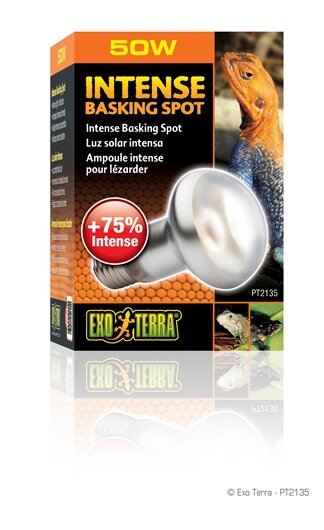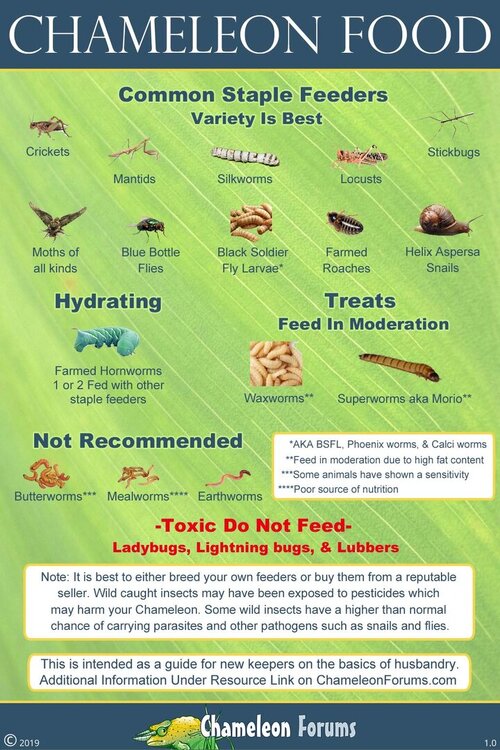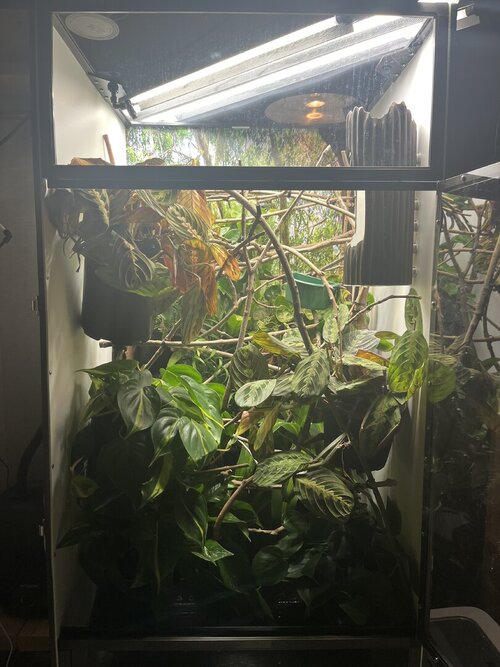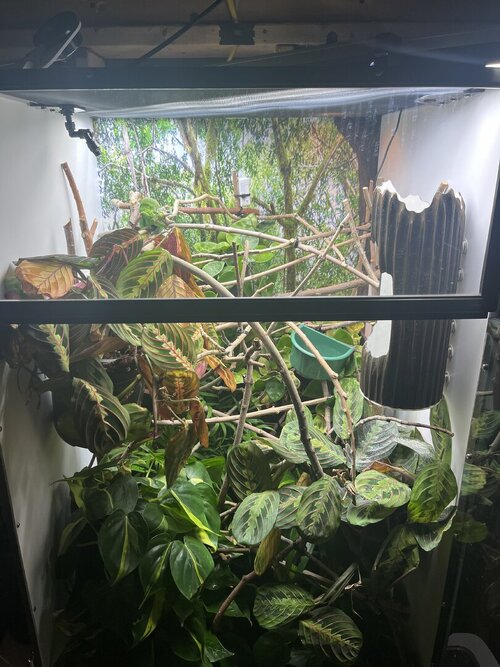Nyssako
New Member
Hello, my 2 months veiled chameleon refuses to eat. Currently we only have basking light, pet shop will get the us light in few days and will upgrade.
At the beginning she easily ate 3 crickets a day for few days, we have moved her to large 45x60 cm.
She has places to hide/crawl.
I tried to feed her crickets and worms as well,
Her interest wears off easily. It’s been 1 week since we have her, she lets crickets run around the terrarium without touching, I made worm cup on the wall but she doesn’t touch them as well. What could be the reason

At the beginning she easily ate 3 crickets a day for few days, we have moved her to large 45x60 cm.
She has places to hide/crawl.
I tried to feed her crickets and worms as well,
Her interest wears off easily. It’s been 1 week since we have her, she lets crickets run around the terrarium without touching, I made worm cup on the wall but she doesn’t touch them as well. What could be the reason









